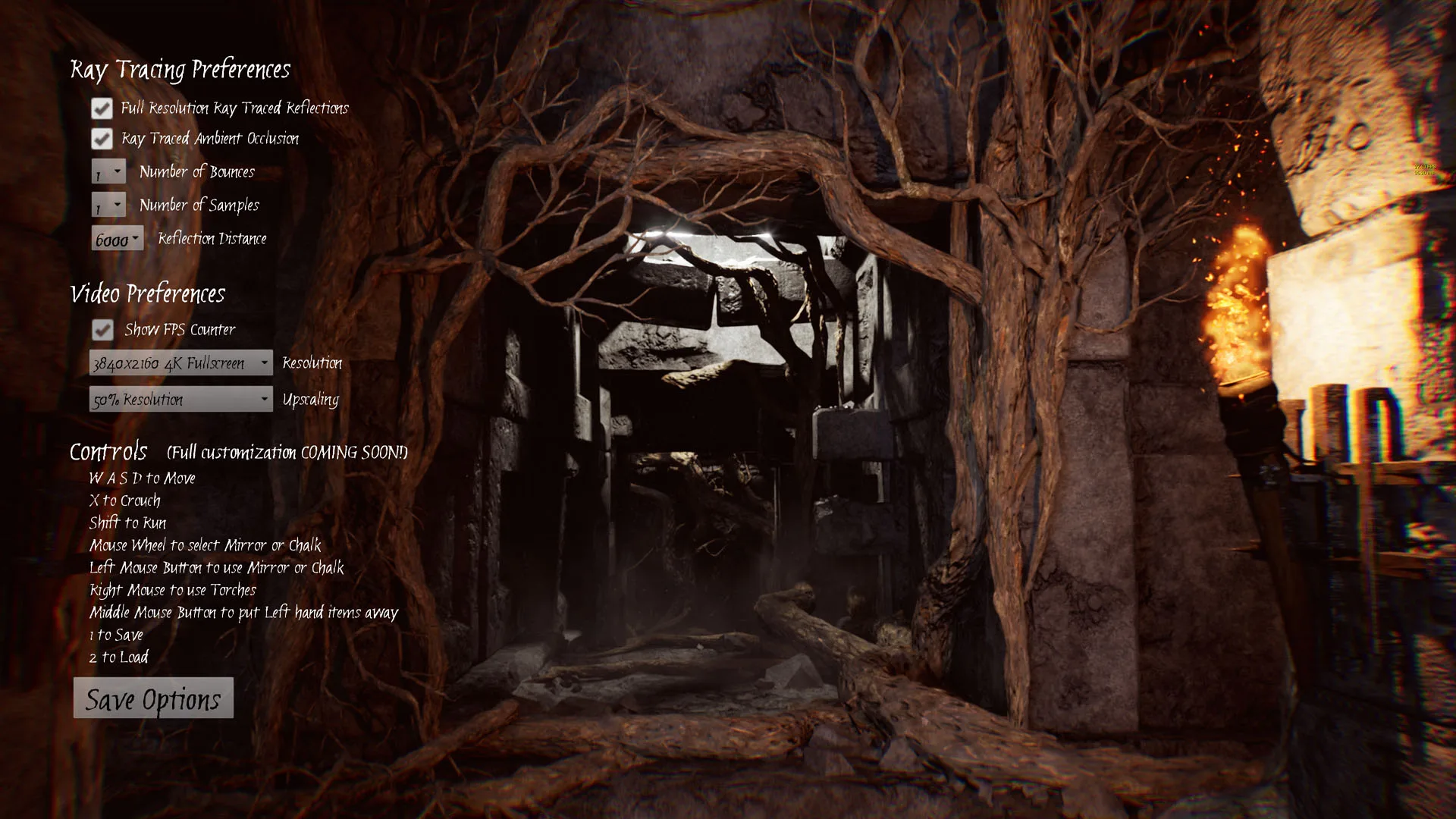Stay in the Light RTX-required Game Preview & Interview with the Developer
Sunside Games’ Stay in the Light has released on Steam in Early Access this week. Stay in the Light is a great example of the work that independent developers are doing with ray tracing, and we jumped at the opportunity to preview the game and to interview the indie developer, Richard Cowgill. We had a lot of questions and we also asked interested r/NVIDIA Reddit members to forward us their questions.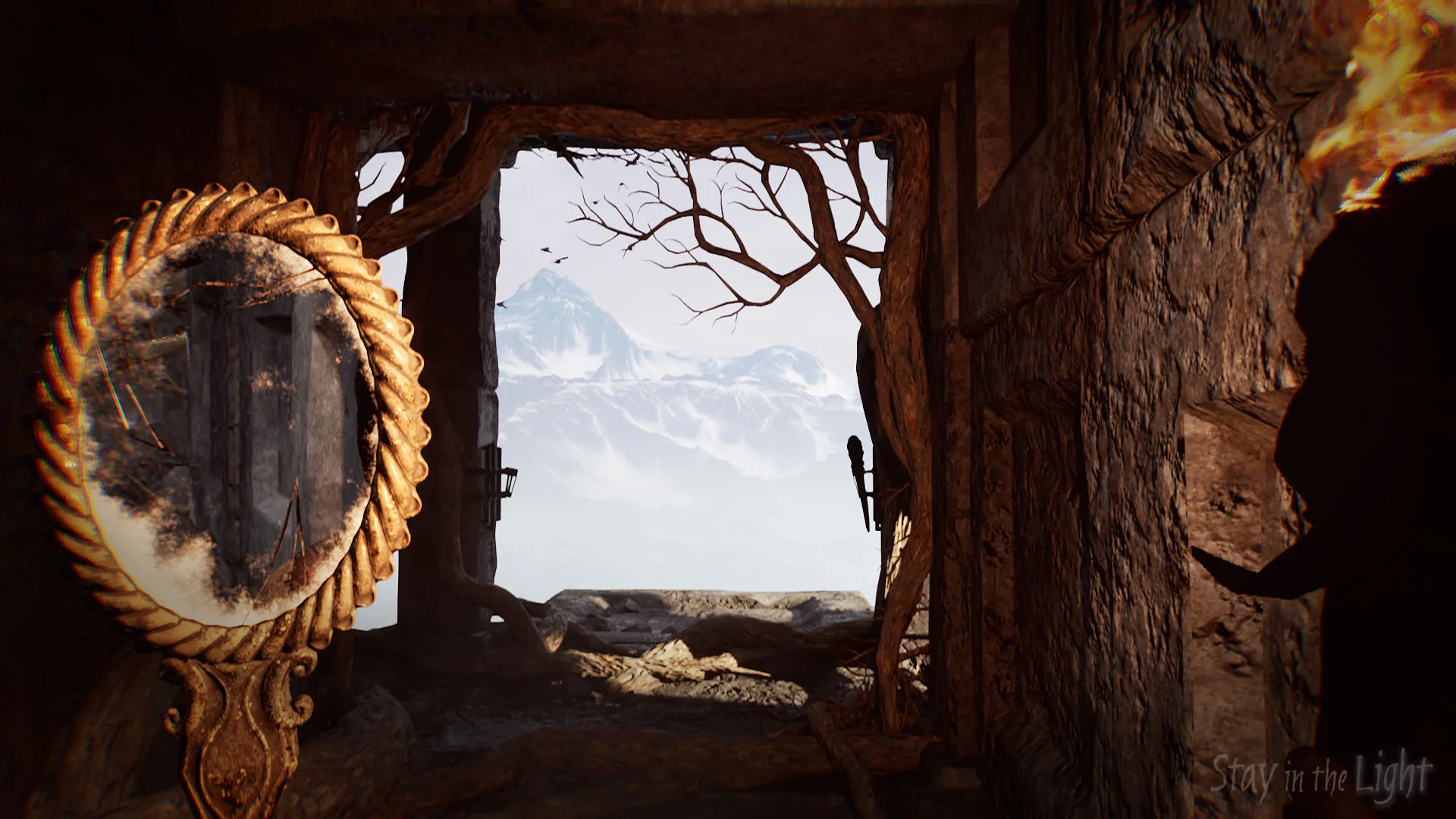
Stay in the Light’ uses ray tracing as a core gameplay component, not just eye-candy, and it appears to be the very first game that has ray tracing support as a requirement. To play it now, you must use a high-end GTX card or a RTX card. The dev’s eventual goal is to make it playable on a GTX 1060/3GB card when it is finished and released in a 6 to 8 month timeframe. We received a Steam code from NVIDIA and have spent a few hours playing it.
According to NVIDIA, Stay in the Light illustrates how even indie developers can get creative with ray tracing, making it a core gameplay component. Stay in the Light randomly generates its dungeons which means is very difficult to ‘bake’ lighting using traditional rasterization techniques for levels that do not yet exist.
Stay in the Light by Sunside Games is a mostly one-man operation, and Richard Cowgill only started working on the game in April after NVIDIA enabled ray tracing on GeForce GPUs. Blockbusters such as Battlefield V, Metro Exodus, Shadow of the Tomb Raider, Call of Duty: Modern Warfare, Quake II RTX (releasing tomorrow) and Wolfenstein: Youngblood make it clear that the big developers and publishers are beginning to support ray tracing. But indie developers are also using it to make their games unique.
Stay in the Light Gameplay
Stay in the Light is a puzzle-horror game that was influenced by the Silent Hill series. The player has to progress through randomly generated dungeons collecting treasure, all the while being hunted by an immortal enemy called Him. The player has no weapons, but he must survive this nightmare place by using a mirror, a torch, and some chalk. Early on, the player is advised to light a torch which can be used indirectly against Him.

The dungeons are randomly generated making for unlimited replayability allowing the player to pick his dungeon. When you die, you have a choice to replay the same dungeon or pick another random level and watch the generation process in action.
Stay in the Light uses RTX tech to create immersive environments depending on lighting and shadows to set the mood that can only be rendered by real time ray tracing. For example, the mirror reflects what is behind the player with perfect accuracy. And it’s quite a shock to see Him appear menacingly behind you which adds to the horror element.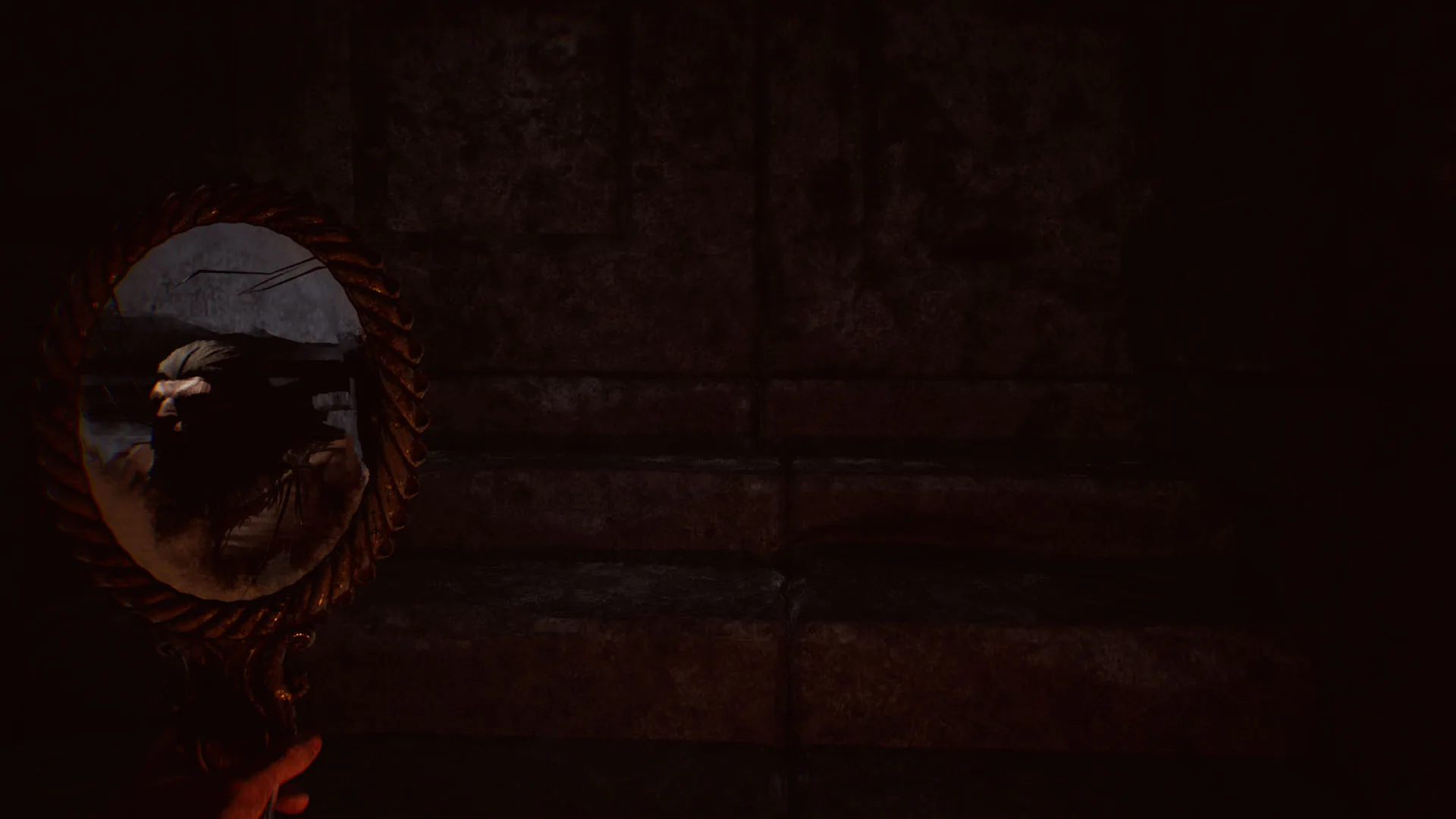
Him teleports into the game at just about any place, and you are advised to stay in the light. Here the torch – which will fizzle out if the player doesn’t light others and also use them – becomes invaluable as it can be used to keep Him from teleporting to certain locations.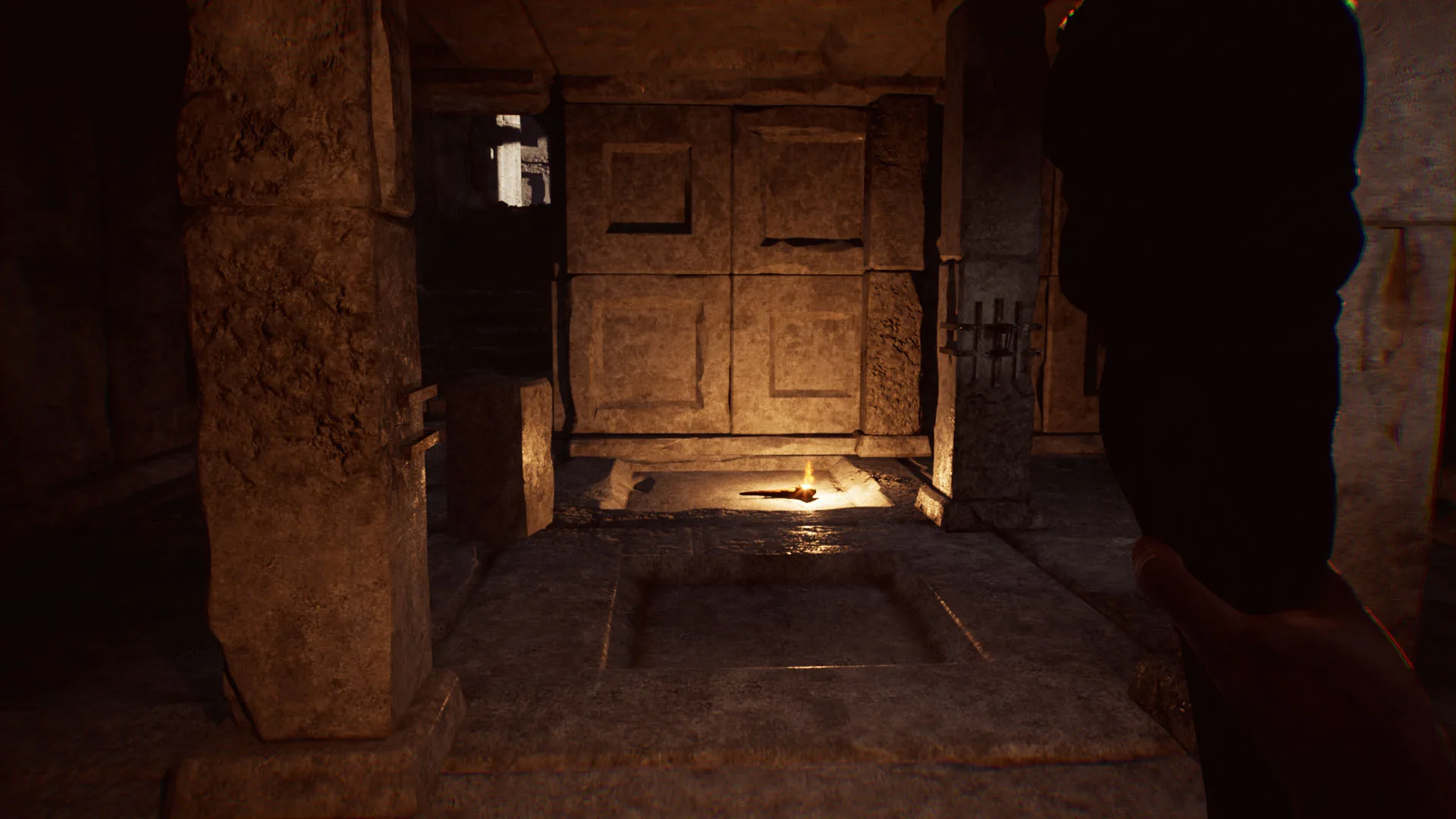
If Him catches the player, it is a gruesome death … and it’s back to the start of the level.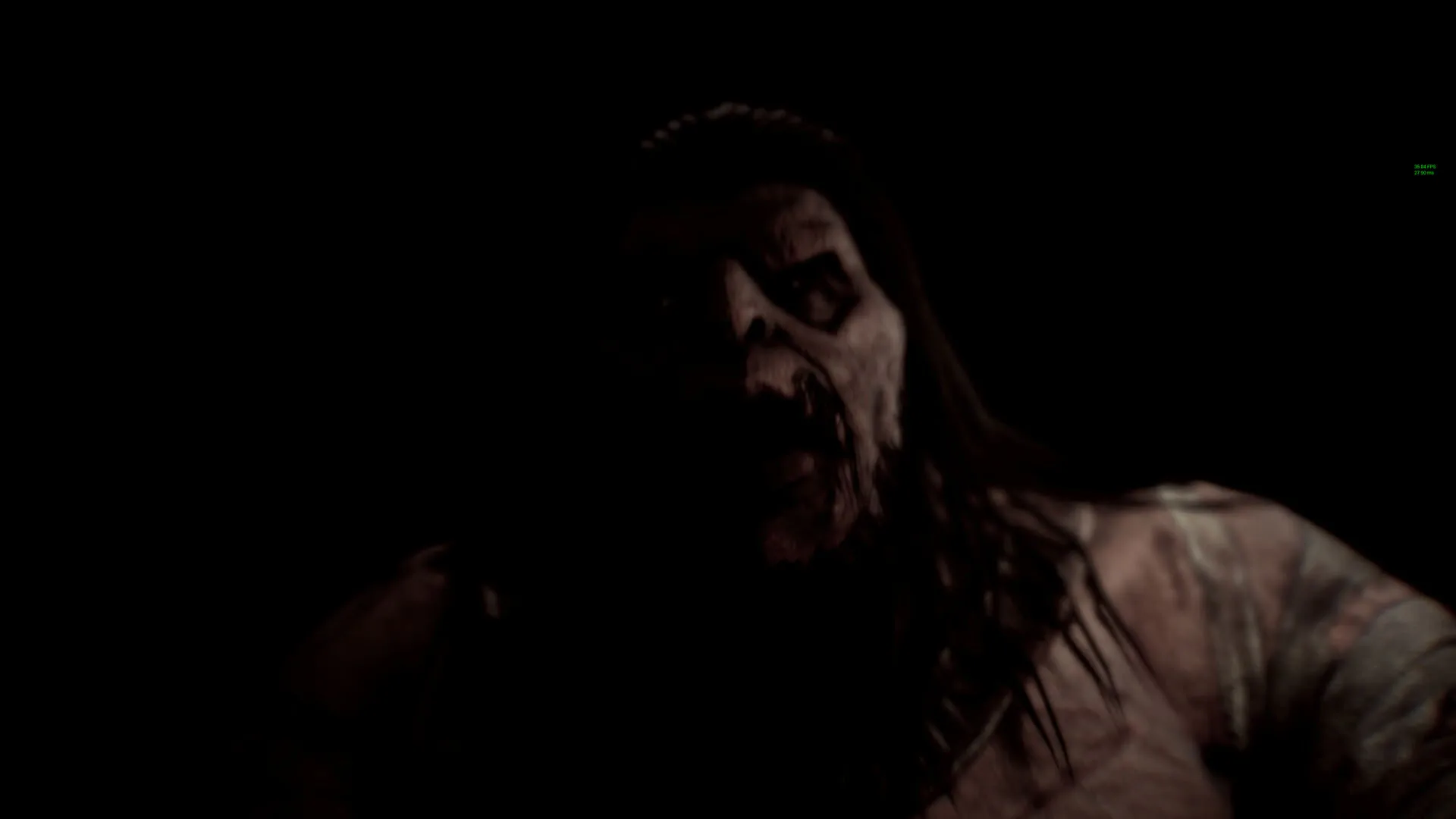
The player must solve puzzles to progress. Sometimes it is quite obvious, like activating a glowing object, and at other times you might have to crouch in front of something for an opening to appear. 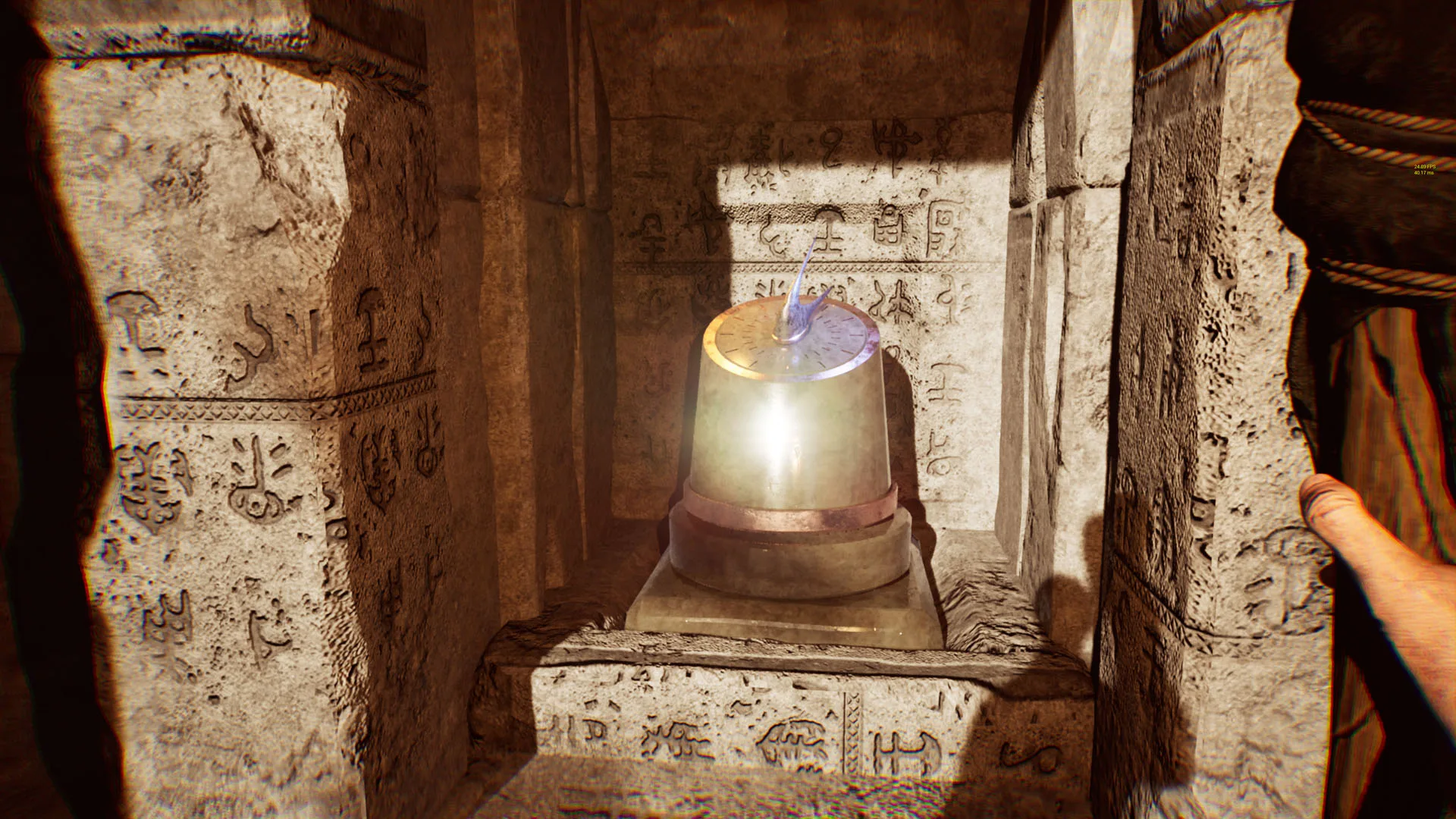 The game doesn’t hold your hand, and it is up to the player to figure out how to progress for themselves. The chalk is a nice touch and the player can mark walls to indicate where he has been.
The game doesn’t hold your hand, and it is up to the player to figure out how to progress for themselves. The chalk is a nice touch and the player can mark walls to indicate where he has been.  In frustration, this player has written some things on the walls that are not shown here.
In frustration, this player has written some things on the walls that are not shown here.
Settings, Performance, and Bugs
Stay in the Light uses the Unreal 4 engine which is itself being updated continually for ray tracing. There are a few settings available currently, and we picked the default for our 4K resolution. A brand new patch added several new resolutions and it also allows the player to widen the Field of View from 70 to 90.
Stay in the Light is in Early Access, and bugs and performance issues are to be expected. We experienced several crashes to desktop over the course of a few hours. At other times, the game froze but recovered.
Our framerates dropped into the mid- to upper-20s FPS with an overclocked i7-8700K/RTX 2080 Ti at 3840×1440 with the above settings until patch 1.01 released yesterday. That isn’t too bad considering that not long ago it might have taken an hour to render a single ray-traced frame – and now we are playing in real time.
However, since yesterday’s first patch, the framerates have significantly improved, and generally a player with our setup can expect framerates in the 30s. Since the game is not a shooter, performance is quite satisfactory, and the dev tells us that we can expect a lot more improvements over the weeks and months to come.
Interview with the Developer, Richard Cowgill
The following is our interview with Richard Cowgill, the creator and developer for Stay in the Light. He has been working in the industry for nearly two decades, and he has a highly acclaimed indie action adventure game to his credit, Crow. Our questions are in italics and indented.
Please introduce yourself and give us your background.
My name is Richard Cowgill. I’ve been working in the industry for almost 20 years on both AAA and indie games. I worked on Battlefield 2, Desert Combat, Borderlands 1 and 2, and many others. A few years ago I released my first indie game called Crow (also on Steam).
What led you to create a RTX-only game? And can’t the same effects be achieved with rasterization?
Well, ray traced graphics are basically the endgame for graphical fidelity, and when I started the project what made it possible to even consider were the GTX raytracing drivers (I had a GTX 1080 at the start) and the release of Unreal 4.22.
The lighting could be done with rasterization, but with added difficulty and less detail. The reflection system and use of mirrors in gameplay, almost certainly not. Some aspects yes, but I’m using actual ray tracing to detect the visibility of your virtual opponent. So while rasterization might be theoretically possible, it would come with a lot of extra complications and limitations.
So rasterization would actually be much more complex and time-consuming to implement? What about performance?
In terms of performance, it would run the same or even worse. I think there’s a real chance it would run worse and not look as good as it would have to involve setting up virtual cameras to render things multiple times. And these are rendered textures, not actual reflections. So I can’t literally detect anything in the reflection. Yeah it would just be difficult, maybe impossible. I haven’t stepped through every logic problem, but I can see hitting several potential dead ends trying to implement gameplay around that.
Are there are performance metrics that are in game as a way to quantify video card and CPU performance?
I don’t know of any without getting overly detailed. The console is available right now, and people can play around with the ray tracing commands. Stat unit is a good way to see if your CPU is being overtasked vs. your GPU, but CPU performance should be good.
How granular are the graphics settings?
Moderately granular to start, and mostly about setting ray tracing preferences. Things like number of samples, number of bounces, reflection max distance, stuff like that. There will be more.
How is it possible that your game will run on a GTX 1060 when it is difficult to play on a RTX 2080 Ti now. What further optimizations are possible?
Well, I think those performance concerns come from people trying to play the game at very high resolution, I’ve heard stories of some people trying to play the game at 4K res and getting 20 FPS on a RTX 2080 … that actually sounds like pretty good performance to me! Considering that this is a scene that is fully lit and shadowed with real time ray tracing.
I take advantage of Unreal 4’s latest temporal upsampling technology which is very good, and you can tune other things like cutting reflection resolution in half. A RTX 2080 can get 60-100 FPS depending on the options. But I do know that both Epic and NVIDIA have dramatic code optimizations in the works, and I think a 30-40% speed boost is right around the corner with updated code and drivers. So my expectation is that this is going to get a lot faster, and I’m in touch with NVIDIA engineers on other immediate optimization tricks that can be done.
I am one of those who are playing on a RTX 2080 Ti at 4K and rather impressed with the results. It used to take hours to render a single ray traced scene.
Oh I definitely understand wanting to run at that res. It’s a RTX 2080 Ti after all! But I seriously challenge any game (except maybe Minecraft with its blocky graphics; not sure) that can run ray traced at 4K on any card and get really good framerates.
What future plans do you have for the graphic enhancements besides ray tracing? Better textures? More options? What about implementing DLSS into the game? Is there any AA now? And how will DLSS improve performance or will it just make it look better?
Yeah AA is there and just works, using the latest implementation of Temporal AA that UE4 uses which is very good. DLSS is being looked at; that’s going to be another optimization that will probably happen as soon as Unreal fully supports RTX in every way. I know Epic is really working on this.
What is the state of the Unreal 4 engine regarding ray tracing? You mentioned a 30+% speed boost is possible.
Yeah, graphically I expect the game to improve in every way; textures, more options, etc. In fact, almost everything in the game has either a 2K or 4K texture right now. The game is being built with 3GB VRAM as a minimum, since that’s the minimum spec on a 1060 GTX card. The goal is to basically fill up that 3GB as much as possible. It might mean going to 4K textures or even 8K in some cases across the board.
Can you compare RTX tech to another prior tech?
In the past couple of years I felt like there was a good technology jump using distance field shadows. Basically using a voxel to approximate shadow casting volumes. I was making heavy use of DFS and DFAO in dynamically lit scenes before, and its very good. You can combine that with other rasterized tricks to get pretty good shadows and lighting. But it does have limits. For example, characters and static scenery cast their shadows with different results, making things look inconsistent.
So as good as that was, and as much of an improvement as that was, it’s just not on the level of actual ray tracing. And this is all moving very fast, I was catching up to DFS/DFAO a year ago, and now that’s outdated. So in some ways its not surprising to me that people are still catching up to this tech and what it can do.
How long did it take you to get to where you are at now in the Early Access game?
Unreal 4.22.1 (which it runs on) is definitely solid for Ray Tracing, but it’s also Epic’s first pass. They just put out 4.22.2 which Stay in the Light will be updated to this week. It’s first pass in the sense that not every RTX feature or system in Unreal supports ray tracing yet. For example, they don’t have ray traced global illumination yet. GI is still fully dynamic, but that part of the scene has to be rasterized. But they do RTX shadows, reflections, ambient occlusion.
I expect GI will be coming soon, maybe with the 4.23 or 4.24 update. The moment Epic has that figured out, it will go into this game. And when it happens it will be a graphics boost. The scene will just automatically look better.
How easy is it to develop with UE4’s new RTX tools?
Very easy! Mostly everything just works, and is highly backwards compatible. Kudos to Epic for making the transition from rasterized to RTX so seamless.
Does RTX change your workflow at all?
Well I spend less time trying to fine-tune lighting and shadows. Once a light is set up with good penumbra, falloff values and so forth, it becomes a pretty good template for most ray tracing lights. I tend to work with only two types of lights in Unreal now: RT point lights and RT rect lights. Rect lights are the new kind of realistic area lights that Epic fully implemented when they got RTX implemented in 4.22.
How long have you been working on ‘Stay in the Light’? And is a 6-8 month timeframe reasonable to expect the finished game?
The first concept was quite literally two months ago. It’s been a lot of very hard work in two months to make this happen. I have the help of an excellent 3D artist for characters and props, and audio/ambience is done by a small team of sound FX guys. But I literally do everything else. I have a lot of experience developing for Unreal as a platform, well aware of its strengths and weaknesses. And this kind of game really excites me, so I work around the clock on it. Even to the point where looking at my bathroom mirror at night has freaked me out with visions (I’m heavily into the nightmare fuel).
Yeah I think the game can be done in that timeframe if the focus is kept on first person horror, a random dungeon generator, and environment puzzles/traps/treasures. There’s the chance it could expand and go beyond that, like adding co-op or something else, but I really want the community to have that input. If they demand it, I would do it, and I really like that idea for a game. But it’s also possible that maybe something like co-op is added after the game is done as an update, just so it doesn’t take too long in Early access.
Coop as DLC?
Well probably a straight update, I wouldn’t want to divide the community with DLC, and I don’t think I need to charge for that.
Very cool. Is there a dedicated forum where Stay in the Light players can give you input?
I’m just using the Steam forum, anyone can post there. Even if you haven’t bought the game and are thinking about it, I want people to leave their input. I read that location for sure.
What is the “horror” aspect of the game – other than being crunched by Him audibly as the scene fades to white? Are the deaths going to become more graphic?
Yeah the deaths will get more graphic, I think that will become obvious really soon. Like in the trailer NVIDIA posted.
What games influenced your style? I am guessing old school like ‘Wolfenstein’. ‘Stay in the Light’ gives more of a sense of dread rather than gore like Resident Evil series.
Silent Hill for sure, I’ve always been more into Silent Hill than Resident Evil. Diablo 2, Wolf, of course. And Pathways into Darkness; I’m an old Bungie gamer. I love random dungeon crawlers, getting loot and items, killing monsters, all that sort of thing. At the same time, that exact game has been made to a death, and I’m trying to create something in kinship with that but is maybe a little newer in how it considers ray tracing for gameplay (not just a graphical element), and first person horror means you’re not just running around killing monsters all the time.
The horror aspect needs to be more horrific than that, more environmental and immersive. I’m not into jump scares or cheap tricks, I want to build a sense of real dread for the player as he plays the game. And even though the first release isn’t that big on content, ultimately the game will take you through different feeling environments and a proper journey.
The audio is very good and it adds to the sense of dread. How does “stay in the light” relate to the game mechanics? I have been killed in very bright areas by Him.
Ah well, its an instruction on how you can use your torch, right in the title of the game. The idea is he prefers the shadows, avoids the light, but is currently not restricted to shadows in a binary way. So you’re never completely safe. But this is also an evolving thing.
Torches drive Him away for sure right now, but even that isn’t 100% guaranteed. This is the horror aspect at work … a game needs to have rules absolutely, but horror can be more organic than strict rules. So there’s a bit of a design contention there, but the idea is that this will get improved and discovered over time. His AI will get more robust; he’s going to make smarter decisions over time, and you’ll have more tools to deal with Him.
Your first game, ‘Crow’, was released in 2014 and it’s highly acclaimed. Was this game also a one-person effort? And what have you learned from it that you have applied to ‘Stay in the Light’?
Yes, the only real difference is that it was done on a custom engine. It was really developed before Unreal 4 was even an option.
I think the biggest thing I’ve learned in all this is the scope has to be right, and if so, you can do anything. So that’s making the good right decisions at the beginning to figure out what the game is and isn’t, and focusing on that. I’ve seen people give advice that certain types of games shouldn’t be made, or 3D games can’t be done by an indie – none of that is true. But this applies to AAA development as well, they frequently overextend themselves (I’ve been part of some of those games).
‘Crow’ plays on most platforms including mobile. Aren’t you limiting yourself to a much smaller group of gamers as only Turing GPUs will be able to take full advantage of the RT features? And could ‘Stay in the Light’ game run on AMD cards if they bring ray tracing support to their drivers?
As for AMD I don’t know, this is where the tech is at right now today. As far as I know, AMD is only working on a solution but has nothing I can use yet, so that’s hard to say.
As far as markets go, I don’t know what the right answer is to be honest. I pay attention to the Steam hardware data, and I’ve seen RTX card sales on the rise. GTX 1060, 1070 and 1080 cards are (I think) over 20% of the entire Steam market. That seems like a pretty good starting point to me.
What kind of assistance has Nvidia made available to you with their Indie program?
As soon as they heard about the game they sent me a RTX 2080 Ti right away. I’ve been developing the game since on both the RTX 2080 and GTX 1080, just to make sure it can still run on GTX cards (just lower res and less options). They put me in contact with engineers to give me perf data and advice.
I’ve actually had some tech requests I’ve given to them so I can do even more with ray tracing in gameplay, They’ve been really supportive and helpful since they heard about it, and none of this was part of my plan originally. I had no idea they’d want to provide so much help, and they weren’t expecting me to come along. I think I kinda shocked them, I’ve had more than one exec at NVIDIA tell me I fell out of the blue and they’re just adjusting to what I’m doing in real time.
You are also a VR developer. Is there a chance that your game will come to VR eventually? ‘Stay in the Light’ seems to be perfect for VR.
Yeah, I really want it. I’ve had Vive and Oculus kits pretty early, I just got the Vive Knuckles. Performance optimization is one of my specialties, and I think I could make the game run well in VR today. It’s not supported yet in Unreal, so this is all very new. But I don’t think we’re going to have to wait years for this. It’s probably right around the corner, probably by the time Stay in the Light is done.
Between Epic and NVIDIA, a lot of engineers are working on this. That much I know for sure. It could be that VR and ray tracing will be limited to RTX cards, that would make sense to me. Just because of the performance demands of VR, I wouldn’t anticipate the GTX line could do both. But there will be software optimizations, and I think everyone is pretty serious about making it happen.
I really appreciate your time in giving this interview.
Conclusion
Stay in the Light is an impressive effort by an indie developer that is barely in Early Access and being improved almost daily. We saw a significant performance increase with just the first patch. If you would like to support this effort to bring ray tracing to RTX and Pascal GTX GeForce cards, buy it on Steam. It is on sale for 10% off at $13.49 and we think it is well worth it if you like horror puzzle games and want to see what ray tracing can accomplish.
Besides helping indie devs with ray tracing, NVIDIA is the official PC partner for Call of Duty: Modern Warfare, an all-new title scheduled for release October 25th. NVIDIA is working with the developer Infinity Ward to bring real-time DirectX Raytracing (DXR), and Adaptive Shading technologies to the PC version.
Tomorrow, RTX Quake II releases on GeForce.com and we plan to bring you a review of it using all the cards it runs on by next week. The first three levels are available as a free download, and if you own the game license as we do, the entire game will be ray traced. We can’t wait!
Happy Gaming!
